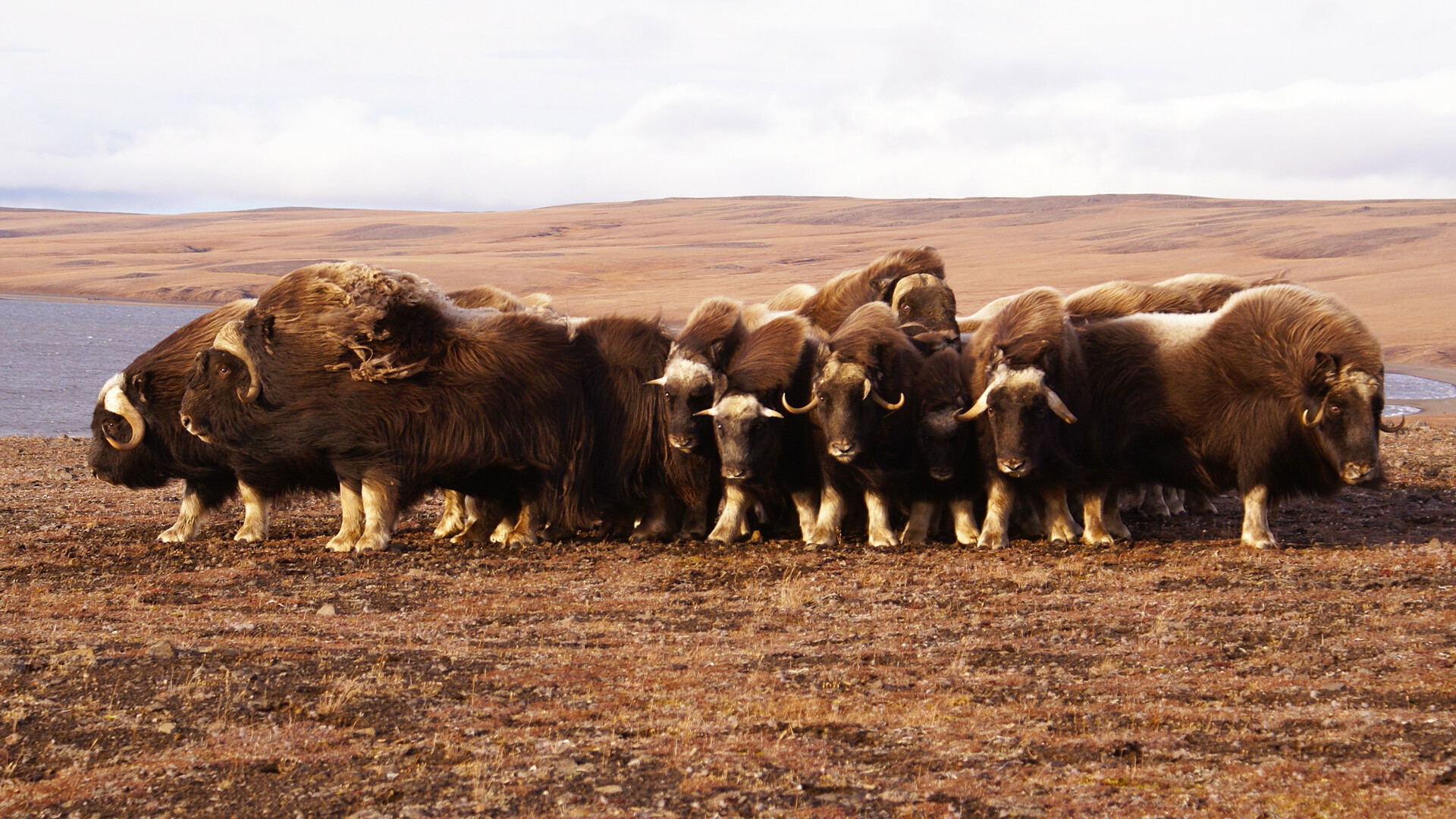
Big and formidable, musk oxen are some of the oldest animals on our planet. They came to Siberia and Eurasia 3.5 million years ago, having descended from the Himalayan Mountains, and gradually moved farther north of the continent. About 190,000 years ago, they crossed the Bering isthmus into North America and settled in Alaska and Canada, in addition to the Taymyr Peninsula.
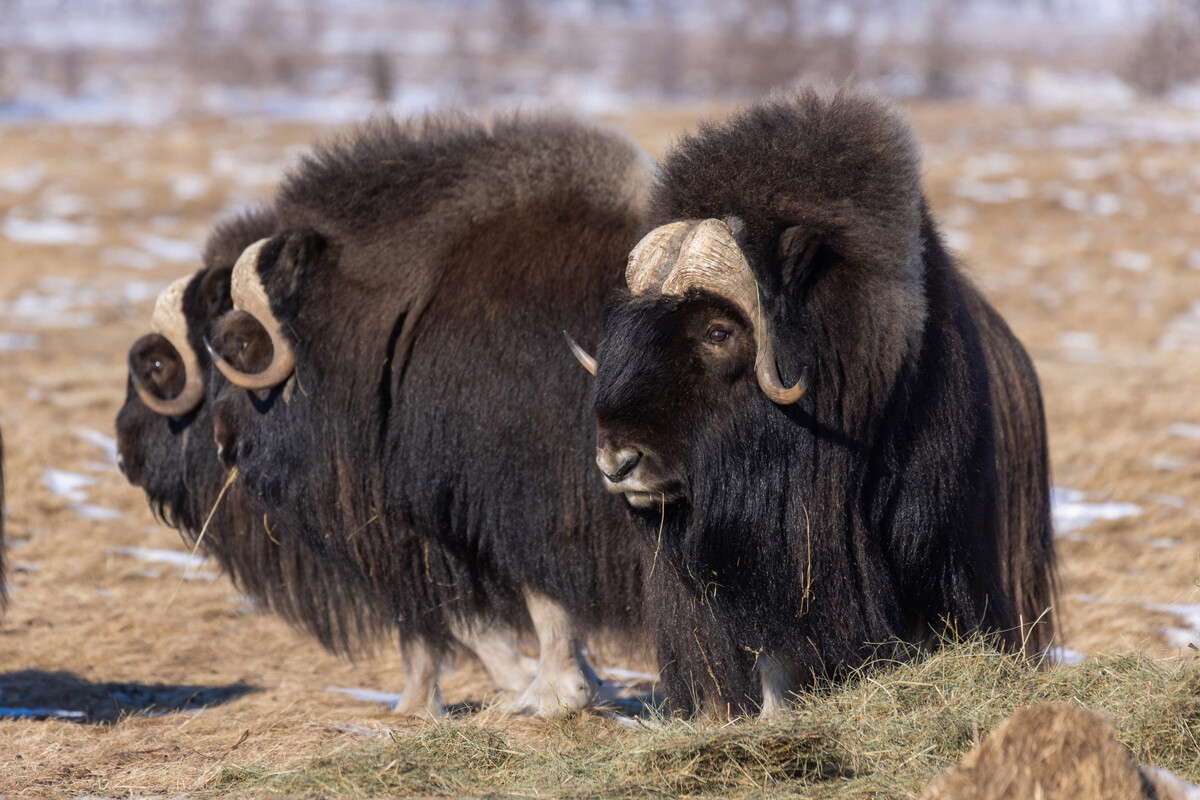
They survived several global climate changes and many other species, including mammoths. However, around 3,000 years ago, there were no musk oxen left in Eurasia. And the reason for that was humans hunting it. Only Soviet scientists were able to successfully reintroduce musk oxen back to Taymyr.
Scientists are still arguing about what the musk ox really is. Some believe that it belongs to the class of bulls, others – that it belongs to goats (as, for example, mountain sheep). But others still believe that it is a separate genus altogether, while all of its other relatives have long been extinct. To establish genetic links between this ancient animal and modern species is quite difficult. So far, its only living relative is considered to be the cloven-hoofed animal takin, which can be found in the Himalayas.
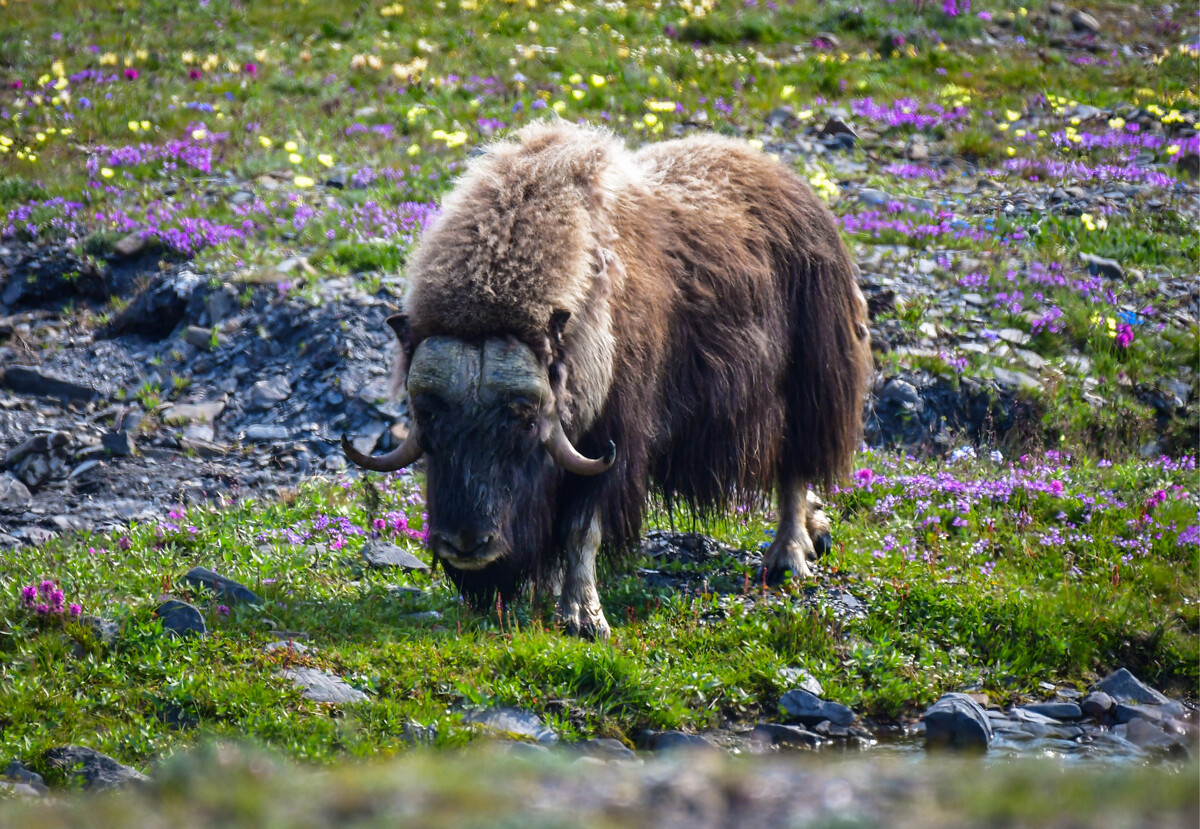
A musk ox on Wrangel Island, Chukotka.
Yuri SmityukIrrespective of its name, there are no musk glands on its body, with the name apparently coming from the word "musked", which, in the language of the Canadian Indians, means a swampy area.
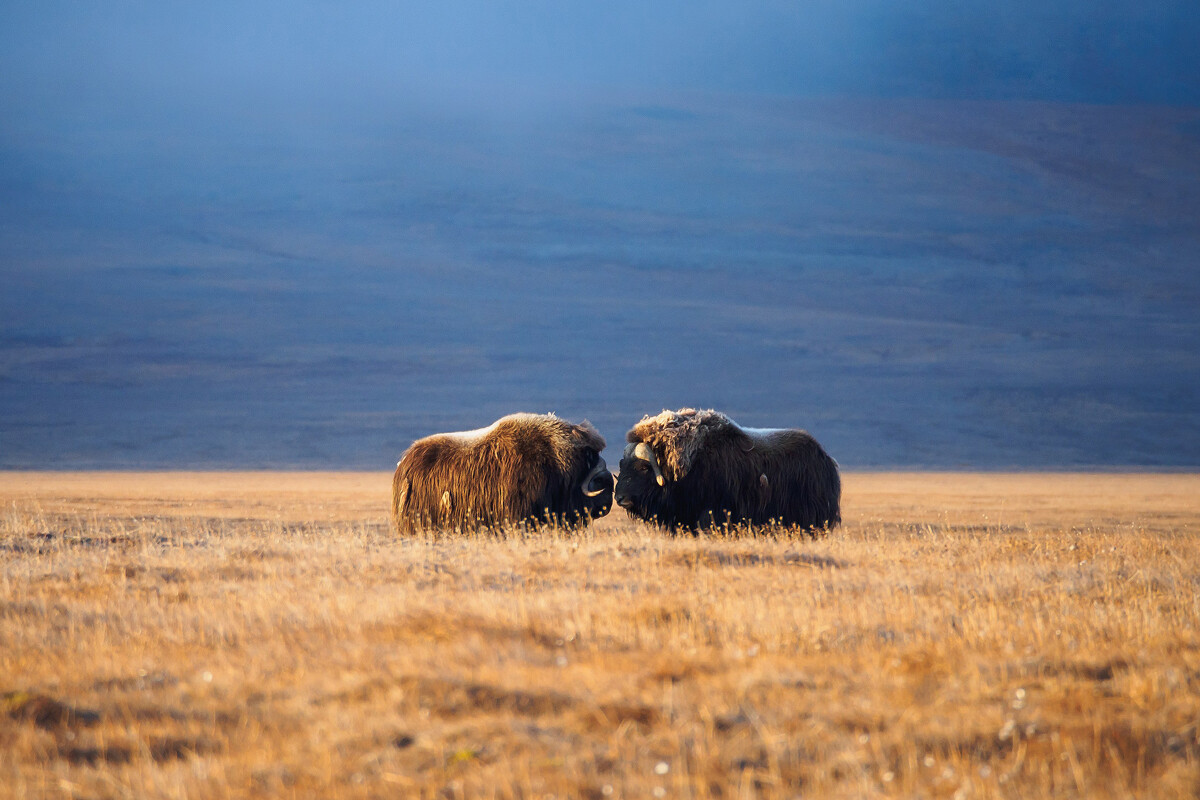
Musk oxen before the battle on Wrangel Island.
Anastasia Petukhova (CC BY-SA 4.0)Its long, thick wool makes the musk ox visually twice as big as it is. Its withers grow up to 1.5 meters and the animal reaches up to 2.5 meters in length. A male weighs about half a ton, while a female weighs almost half as much. Also, Mother Nature has taken care to hide the ears and tail of the musk ox under its wool.
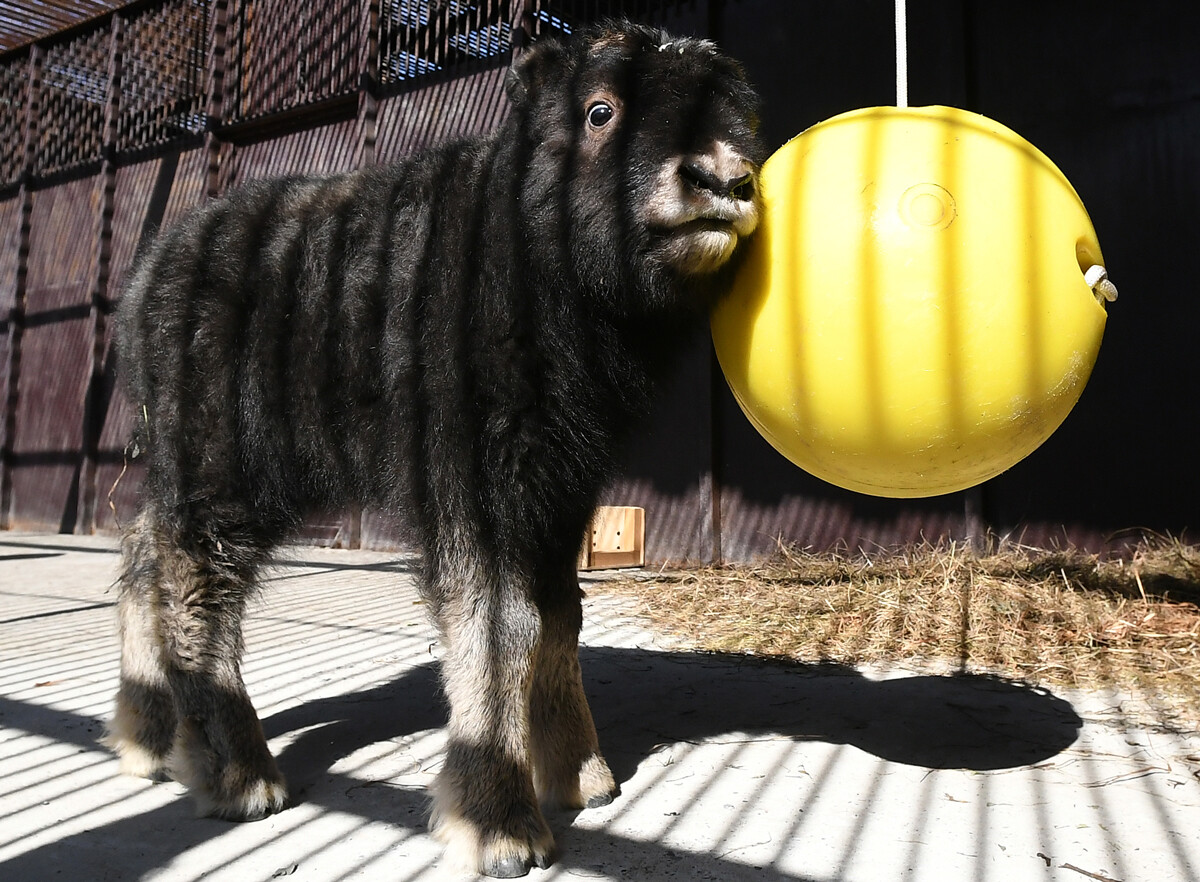
A three-week-old musk ox in the Roev Ruchey park in Krasnoyarsk.
Ilya Naimushin/SputnikIts undercoat is very warm, eight times warmer than sheep's wool, and it perfectly protects itself from frosts and freezing winds. During the spring molt, one large musk ox will shed up to three kilograms of down fur.
It seems surprising, but, in fierce winter weather, musk oxen often graze in the windiest places. The reason is that there is less snow there and it makes it easier for them to dig up nutritious plants.
Most typically, a herd of musk oxen consists of a few females with young offspring. When the males mature, they leave for the tundra. They begin to think about their own lives and gain life experience. Pretty much like humans.
Zoologists have even calculated that musk oxen can travel up to 700 kilometers away from their breeding herd! It is the reason why they were nicknamed "hermits of the Arctic".
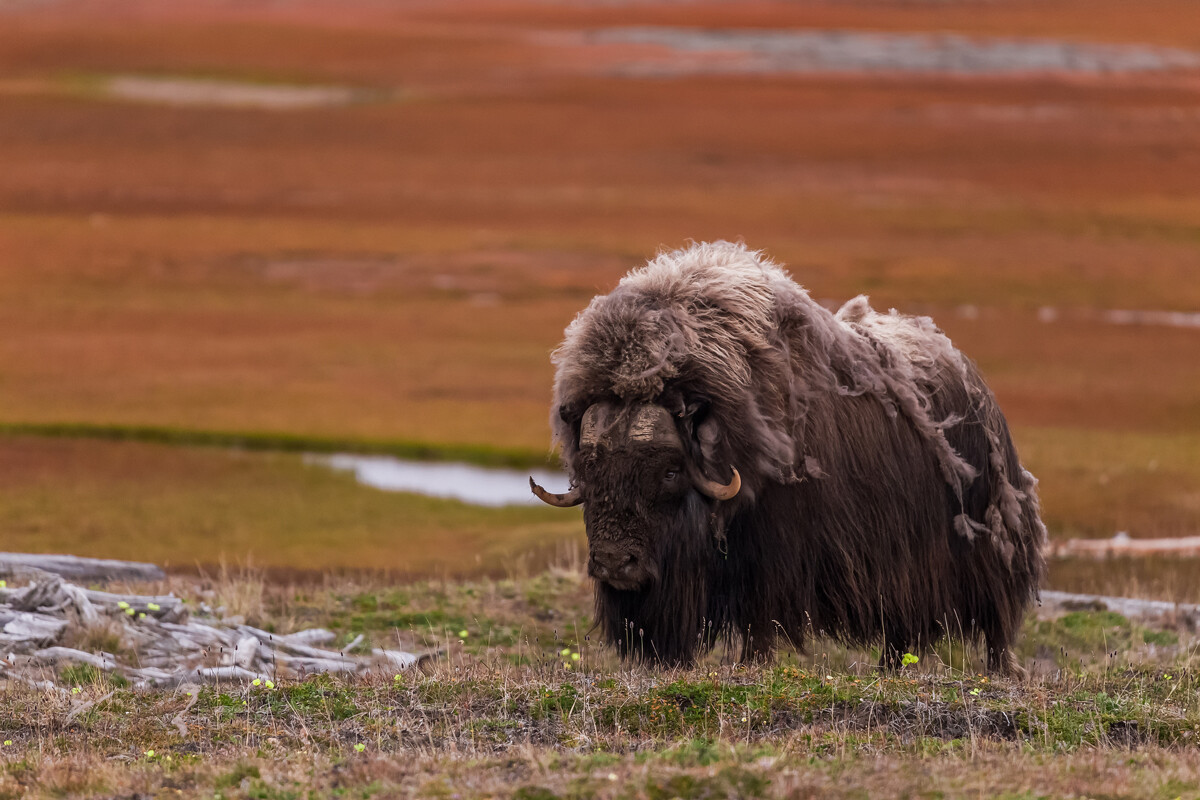
A musk ox on Bolshoi Begichev Island.
Kirill Uyutnov (CC BY-SA 4.0)But, during the rut, they join herds with females and sometimes chase off younger males. Their most active stint falls at the end of July and it lasts until the end of September, when they are in heat. If several males claim a female, they have a head-to-head fight. It rarely ends fatally – as a rule, the losing male simply gives up and runs away.
As seen in photographs, musk oxen gather in a semicircle or a square, as if posing. In fact, this is their strategy to protect their herd. The smaller ones stand in the center, while the larger ones surround them on the sides. And they don't just stand in such a formation, they can move around the tundra in this way.

Wrangel Island.
Alexander Lyskin/SputnikThey also do this during snow storms, standing with their backs to the wind. They also gather in a semicircle when they see an enemy – most often wolves in the Arctic.
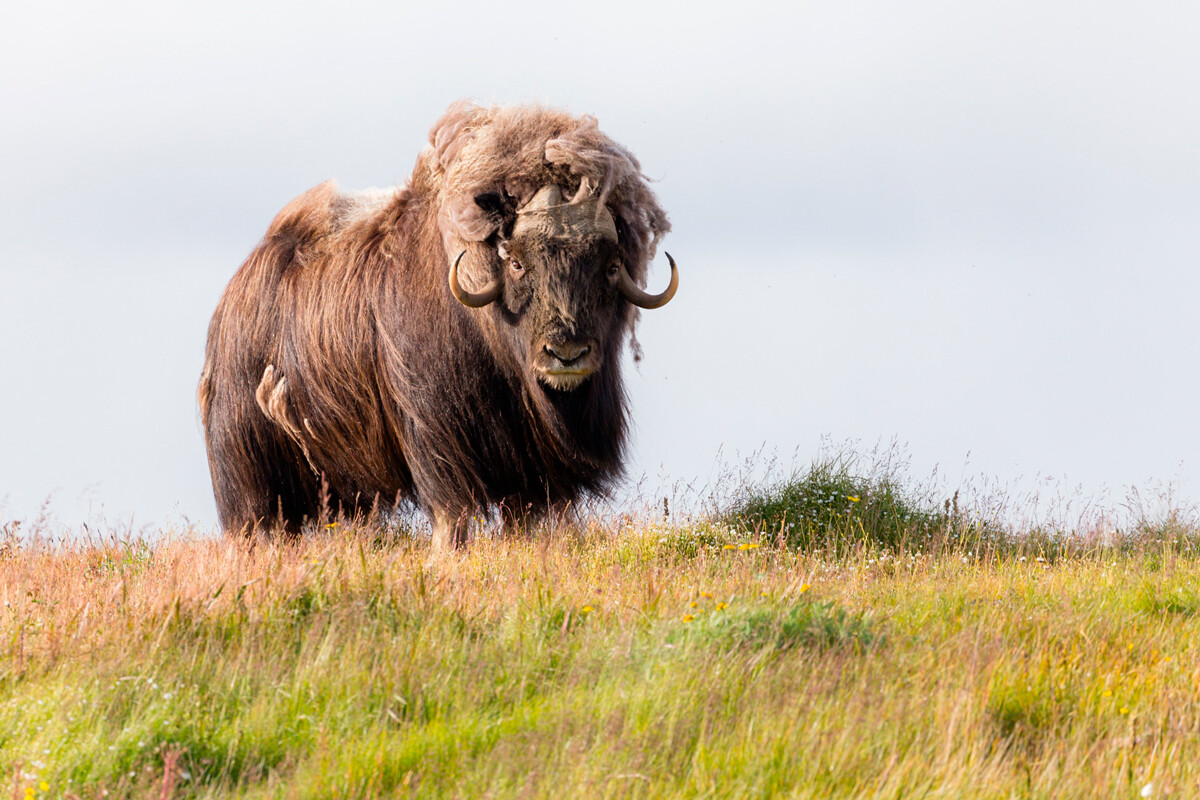
A musk ox, Taymyr.
Joint Directorate of Taymyr ReservesPaleontologists have found remains of ancient musk oxen in the Russian Arctic territories. The "youngest" were estimated to be 3,000 years old. But, at the same time, some scientists believe that the last animals still disappeared much later, probably only 400 years ago.
It is known that, at the beginning of the 20th century, musk oxen lived only in Canada and their population was protected. By the middle of the century, herds of musk oxen were also restored in Alaska. Scientists from Scandinavian countries also tried to bring them back, however these attempts were not successful.

Canadian Prime Minister Pierre Trudeau and his wife Margaret at the airport in Norilsk, 1971.
Vyacheslav Runov/SputnikIn the 1970s, a program began to reintroduce musk oxen back to Taymyr. In 1971, a high-ranking delegation from Canada, headed by Prime Minister Pierre Trudeau, visited Norilsk. It was the first time when the head of another state visited the northern city. The Canadians were immensely surprised that, in the Arctic, Soviet people were able to build such a beautiful city with developed infrastructure. During this visit, Soviet scientists told the prime minister that they would like to reproduce a population of musk oxen and Trudeau promised to help. In 1974, the first ten 15-month-old musk oxen (females and males in equal proportions), which were specially captured on Banks Island, were released in Taymyr.

Young musk oxen brought from Canada and the Taymir, 1976.
A. Mukhachev/SputnikIn 1975, another 40 musk oxen were brought to the USSR, this time from Nunivak Island (Alaska). Half of them went to the Taymyr settlers, while the other half went to Wrangel Island in Chukotka. By the early 1990s, musk oxen had spread across Wrangel Island and northern Yakutia and they were then brought to the Yamal Peninsula.
Today, more than 16,000 musk oxen live in the Russian Arctic, which is now the largest number after Canada (there are more than 100,000 there). They mostly live in Taymyr, with about 4,000 making their home in Yakutia.

Canadian and American musk oxen at a research station on the Taimyr Peninsula, 1976.
V.Gorbatov/SputnikThere are 1,100 musk oxen on Wrangel Island. On Yamal there are about 400, half of which live in the wildlife reserve.
Wherever musk oxen live today, they are monitored by specialists.
Now Russian scientists face the next challenge - how to domesticate the musk ox. They are especially interested in the down of these Arctic animals called giviut.

A herd of musk oxen in the Taimyr tundra, 1982.
Vyacheslav Bobkov/SputnikDear readers,
Our website and social media accounts are under threat of being restricted or banned, due to the current circumstances. So, to keep up with our latest content, simply do the following:
If using any of Russia Beyond's content, partly or in full, always provide an active hyperlink to the original material.
Subscribe
to our newsletter!
Get the week's best stories straight to your inbox